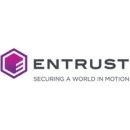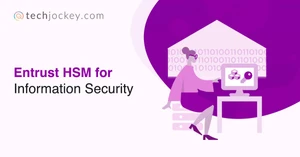What are Data Security Solutions?
Data security solutions consist of various software tools designed to protect sensitive information within an organization. These tools come in various forms and are designed to protect everything from individual messages to entire databases. Regardless of a company's size, data security should be a fundamental business practice. Ensuring the protection of data stored throughout the organization is crucial because any breach can have severe consequences for both the business and its clients.
Every responsible business owner aims to prevent data breaches and to achieve this, they are required to conduct thorough assessments of security vulnerabilities across all departments, from sales to production. They should continuously update and strengthen security measures in response to evolving threats. While data security standards may not be legally required in many regions, prioritizing information security should still be a concern. Data security technologies are essential for maintaining trust and safeguarding sensitive information.
Key Features of Data Security Solutions
Data security solutions are important for safeguarding sensitive information within organizations. These solutions offer a wide range of features and functionalities to tackle the increasing concern of data breaches and cyber threats. Here are the key features that define these solutions and explain their importance in maintaining the integrity and security of data;
- Sensitive Data Compliance: Ensuring compliance with various regulatory standards like PII, GDPR, HIPAA, PCI, and others is a crucial aspect of data security services. These tools assist organizations in adhering to such standards, thereby avoiding potential legal and reputational risks.
- Multi-Factor Authentication: Two-factor or multi-factor authentication adds an extra layer of security by requiring a second form of verification, such as SMS messages or customized tokens, before granting access to sensitive data.
- Efficient Database Management: Data protection software facilitates the efficient management of databases, enabling administrators to access and organize incident-related data for reporting and improved data navigation.
- Deduplication for Data Optimization: Deduplication processes create synthetic backup files, which reduce file size and eliminate redundant data, thereby optimizing storage and data management.
- Data Loss Prevention (DLP) Configuration: DLP protocols are configured within the Data Loss Prevention system to notify administrators, back up, or encrypt data at rest or in response to incidents, ensuring data protection and compliance.
- At-Risk Analysis: Identifying vulnerable data locations helps organizations strengthen their security measures and safeguard potentially exposed information.
- Streamlined Access Management: These solutions allow administrators to define user access privileges, ensuring that only authorized individuals can access sensitive data.
- Mobile VPN for Secure Remote Access: Data privacy solutions provide a secure virtual private network (VPN) for mobile devices, ensuring the safe retrieval of sensitive data remotely.
- Data Transport Security: Data security technologies employ data encryption solutions to safeguard data as it moves outside secure or local networks, preventing unauthorized access.
- Versatile Data Types Support: These solutions enable secure storage of various data types, including text, spreadsheets, and graphics, accommodating diverse organizational needs.
- Database Compatibility: Data security software often seamlessly integrates with existing databases, supporting different database platforms and data types.
- Thorough Auditing Capabilities: Organizations can perform ad-hoc or ongoing IT audits at various levels within the company, ensuring compliance and security.
- Antivirus and Malware Detection: These solutions employ multiple techniques and information sources to promptly alert users to malware threats, thereby enhancing overall security.
- Data Masking for Protection: Sensitive data is protected through techniques such as disguising or encrypting, ensuring usability for authorized personnel while keeping it secure.
- Robust Database Firewall: Data security solutions incorporate database firewalls to protect critical information from various attacks and malware threats.
Benefits of Data Security Solutions
Data security solutions provide numerous benefits that enhance an organization's data protection efforts and overall cybersecurity. Below are the advantages that these solutions bring to the forefront;
- Reduced Risk of Data Loss: Data Loss Prevention software mitigates the risk of data loss by implementing robust protective measures and encryption protocols. By doing so, it ensures that sensitive information remains secure and inaccessible to unauthorized individuals.
- Breach and Data Theft Prevention: These solutions are essential in preventing data breaches and theft attempts. By strengthening the organization's defenses and actively monitoring for potential threats, data protection solutions serve as a powerful barrier against cyberattacks.
- Improved Privilege Allocation and User Governance: Data security solutions enhance privilege allocation and user governance, enabling organizations to grant and manage access with precision. This ensures that only authorized personnel can access sensitive data, reducing the risk of misuse or accidental exposure.
- Reduced Risk of Data Loss and Noncompliance: The comprehensive approach of data loss protection software not only reduces the risk of data loss but also helps ensure compliance with industry-specific regulations, such as GDPR, HIPAA, and PCI. This compliance is critical for organizations as it helps avoid legal consequences and reputational damage associated with non-compliance.
Data Security Solutions Trends
The rapid evolution of digital transformation has given rise to several cutting-edge technology trends that are reshaping the way data protection software works. Here are some notable trends influencing the world of information security;
- Blockchain for Enhanced Data Security: The rise of blockchain technology has had a profound impact on data security. Blockchain's immutable ledger system can be utilized to document activity and monitor user access, enhancing data security measures. Moreover, it is increasingly being used to secure data related to transactions and financial activities. Security solutions are now integrating blockchain and cryptographic technologies for various purposes, including user authentication and the creation of secure databases.
- Big Data Challenges: As organizations increasingly rely on big data technologies for storing, processing, and distributing vast amounts of information, ensuring the security of these massive datasets becomes paramount. Some tools are specifically designed to secure big data workloads, while others may not have such capabilities. Understanding the limitations of traditional security offerings is essential for individuals or organizations aiming to effectively protect their big data assets.
- Containerization for Security: Containerized applications and networked microservices offer several security-related advantages. Many companies are adopting containerized storage and backup solutions to create secure environments for their data. Additionally, containerized applications simplify the duplication and distribution of data and applications, thereby streamlining security practices.
- Adaptive Authentication: The emergence of risk-based authentication and zero-trust security models is revolutionizing identity management and enhancing user experience through adaptive authentication. These innovative tools monitor user behavior, device attributes, physical location, and other factors to compile risk scores. Users with higher risk scores are prompted to provide multi-factor authentication credentials, ensuring enhanced security. Conversely, regular users who engage in routine tasks face minimal disruption, which fosters a seamless user experience.
Top Most Effective Data Security Solutions
| Software | Features | Price |
| nShield Connect HSM | Highly Flexible Architecture, Faster Data Processing, nShield Remote Administration, Remote Configuration, nShield Monitor | Price On Request |
| Next-Gen CASB | Data Loss Prevention, Cloud Access Security, Secure all applications automatically, Vulnerability Management, SaaS Application Management | Price On Request |
| McAfee Total Protection | Password Manager, Protection Score, Multi-platform compatibility, Firewall, File Shredder, Online Security Experts | ₹1,699 |
| Fortinet FortiGate | Threat Prevention, SSL/TLS Functionality, Stability & Reliability, Routing & Access Control | Price On Request |
| Symantec Data Loss Prevention | Data Leak Detection, File Analysis, Blacklisting, Sensitive Data Identification, Incident Management | Price On Request |
| Cisco Identity Services Engine (ISE) | Network Access Control (NAC), Guest Access Management, BYOD (Bring Your Own Device) Support, Integration with Security Ecosystem, Policy Enforcement and Monitoring | Price On Request |
| Trend Micro Deep Security | Intrusion Detection and Prevention, Anti-Malware and Anti-Spyware, Virtual Patching, Web Application Protection, Log Inspection and SIEM Integration | Price On Request |
| IBM QRadar | Eliminate Manual Tasks, Compliance, Real-Time Threat Detection, Integration, Centralized Insight | Price On Request |
| Varonis Data Security Platform | Data Access and Permissions Analysis, Data Classification and Labeling, Real-time Threat Detection and Response, Insider Threat Detection, Data Auditing and Reporting | Price On Request |
| CheckPoint Full Disk Encryption | Full Disk Encryption for Data Protection, Pre-Boot Authentication, Centralized Management and Policy Enforcement, Support for Removable Media Encryption, Data Recovery and Key Management Options | Price On Request |
Factors to Consider When Selecting Data Security Solutions
When selecting the most suitable data security platform for your organization's specific needs, it is essential to consider several crucial factors that will determine the effectiveness of your cybersecurity efforts. Here are key steps to guide you in making an informed choice;
Step 1: Assess Your Cybersecurity Risks and Vulnerabilities: Before making any decisions, take the time to assess your current cybersecurity risks and vulnerabilities. This involves conducting three critical cybersecurity assessments;
- Asset Audit: Conduct a thorough analysis of your network components to identify network endpoints, data, and software programs associated with these endpoints. This feature provides a 360-degree view of your network, enabling you to gain insights into your risks and vulnerabilities.
- Risk Assessment: Examine your network in detail to identify potential risks and assess their potential impacts. Prioritize these risks to effectively focus your cybersecurity efforts.
- Vulnerability Assessment: Evaluate the effectiveness of your network's protection against cyber threats. This includes examining areas such as outdated security patches, cybersecurity awareness within your organization, and conducting penetration tests to identify vulnerabilities.
Step 2: Consider Your Plans for Future Growth: Ensure that the data security solution you choose is scalable and can accommodate your organization's growth over the next five years. Scalability is crucial to prevent the loss of efficacy or performance issues as your business expands.
Step 3: Consider Regulatory Compliance: Many businesses must adhere to specific regulatory standards for data security. Evaluate how the chosen solution aligns with industry standards, such as the Payment Card Industry Data Security Standard (PCI DSS), to ensure compliance and secure data transfer.
Step 4: Evaluate Integration with Existing Security Tools: Ensure that the new data security platform integrates seamlessly with your current security measures. Avoid redundancy by verifying if there is already a tool that serves a similar purpose, and evaluate whether the new solution provides enhancements or replaces outdated tools.
Step 5: Assess User-Friendliness: Consider how the new data security solution will impact the ease of use for users within your organization. Evaluate whether it makes tasks more time-consuming or negatively affects the user experience, especially for customer-facing applications. Implement the necessary training to familiarize employees with the new solution.
Step 6: Compare Cybersecurity Vendors: When selecting a vendor, compare their offerings to meet your specific business needs. Streamline the vendor comparison process by facilitating efficient collaboration, conducting meetings, and implementing structured evaluations to ensure alignment with your requirements.




















